Pectus carinatum, popularly called pigeon chest, is the most common chest wall defect after shoemaker’s chest disease. It is an abnormal growth in the cartilage structure of the rib, which is located between the rib and the sternum in the human body. The sternum is popularly known as the board of faith.
- What are the Symptoms of Pigeon Breast?
- Types of Pectus Carinatum
- How Is Pectus Carinatum Diagnosed?
- What are Pigeon Breast Treatment Methods?
- Does Pigeon Breast Grow?
- Exercise for Pigeon Breast
- What Are The Complications of Pectus Carinatum?
- Pigeon Breast Corset Treatment
- What Causes Pigeon Chest Pectus Carinatum?
- Will Pectus Carinatum Go Away?
- When Pectus Carinatum Will Recover After Surgery?
- Can the Pigeon Chest Correct Itself?
- Does a Pigeon’s Chest Get Worse With Age?
- Pigeon Breast Damages
- Can Pectus Carinatum be Prevented?
- Life after Pectus Carinatum
- Pigeon Breast Treatment in Turkey
It appears as a prominent protrusion on the chest wall. It generally occurs in the coastal cartilages of the faith board. It is seen that it occurs bilaterally in some patients and unilaterally in some patients.
The abnormal growths in the cartilage that cause pigeon chest disease occur in adolescence, in children aged 11-15 years on average. This disease is more common in men.
What are the Symptoms of Pigeon Breast?
- The person experiences chest pain or shortness of breath due to sports.
- When the person lies face down, they experience chest pain or tenderness in the chest area.
- Surprisingly, it gives symptoms of asthma in 1 out of 4 people.
- Due to this different appearance, the person is psychologically affected negatively.
- Lung complaints occur.
- Although there are not many clear symptoms of this disease, intensive research continues.
Pectus carinatum, also known as pigeon chest, is a condition in which the sternum (breastbone) sticks out more than usual. It is a relatively common condition, affecting about 1 in 1,000 people.
There are two main types of pectus carinatum:
The severity of pectus carinatum can vary from mild to severe. In mild cases, the protrusion of the sternum may be barely noticeable. In severe cases, the protrusion may be so pronounced that it can interfere with breathing and heart function.
Types of Pectus Carinatum
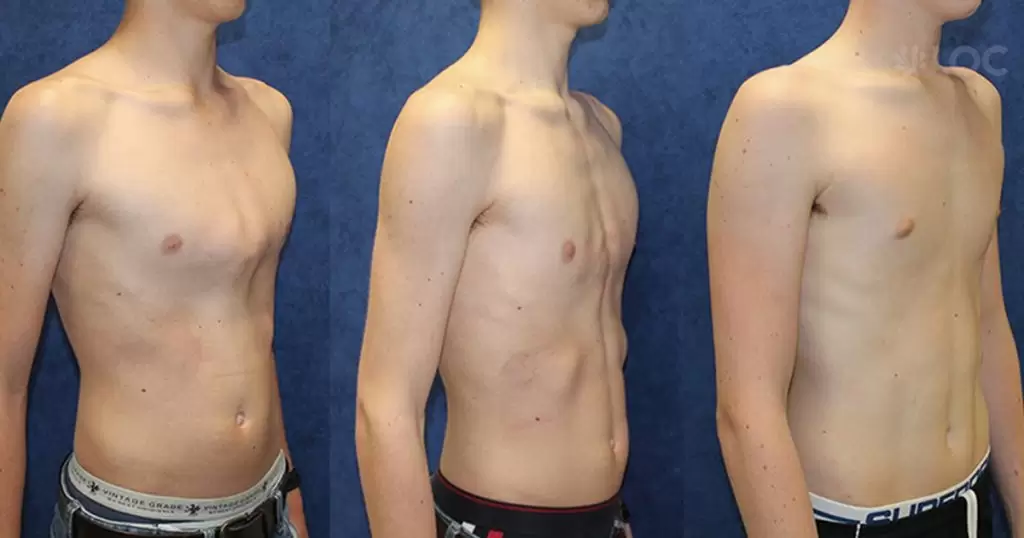
Pectus carinatum, also known as pigeon chest, is a condition in which the sternum (breastbone) sticks out more than usual. It is a relatively common condition, affecting about 1 in 1,000 people.
There are two main types of pectus carinatum:
Chondrogladiolar Pectus Carinatum: This is the most common type of pectus carinatum. It is caused by an abnormal growth of the cartilage that connects the ribs to the sternum.
Chondromanubrial Pectus Carinatum: This type of pectus carinatum is less common. It is caused by an abnormal growth of the cartilage that connects the sternum to the ribs.
In some cases, pectus carinatum can be caused by a combination of factors, including genetics and environmental factors.
The severity of pectus carinatum can vary from mild to severe. In mild cases, the protrusion of the sternum may be barely noticeable. In severe cases, the protrusion may be so pronounced that it can interfere with breathing and heart function.
How Is Pectus Carinatum Diagnosed?
Pectus carinatum, also known as pigeon chest, is a condition in which the sternum (breastbone) sticks out more than usual. It is a relatively common condition, affecting about 1 in 1,000 people.
Pectus carinatum can be diagnosed by a physical examination. The doctor will examine your chest and look for the characteristic outward protrusion of the sternum. They may also order other tests, such as a chest X-ray or CT scan, to rule out other conditions.
Here are some of the tests that may be used to diagnose pectus carinatum:
- Chest X-ray: This is a simple and painless test that can show the shape of your chest and the extent of the protrusion of the sternum.
- CT Scan: This is a more detailed test that can provide more information about the structure of your chest.
- Echocardiogram: This is a test that uses sound waves to create images of your heart. It can be used to check for any problems with your heart that may be caused by pectus carinatum.
Here are some additional tips for diagnosing pectus carinatum:
- Be Aware of the Signs and Symptoms: The most common sign of pectus carinatum is a protrusion of the sternum. Other signs and symptoms may include shortness of breath, chest pain, and difficulty exercising.
- See a Doctor for a Physical Examination: The doctor will examine your chest and look for the characteristic outward protrusion of the sternum. They may also order other tests, such as a chest X-ray or CT scan, to rule out other conditions.
- Ask Questions: If you have any questions about pectus carinatum, be sure to ask your doctor. They can explain the condition to you and answer any questions you may have about the diagnosis and treatment options.
What are Pigeon Breast Treatment Methods?
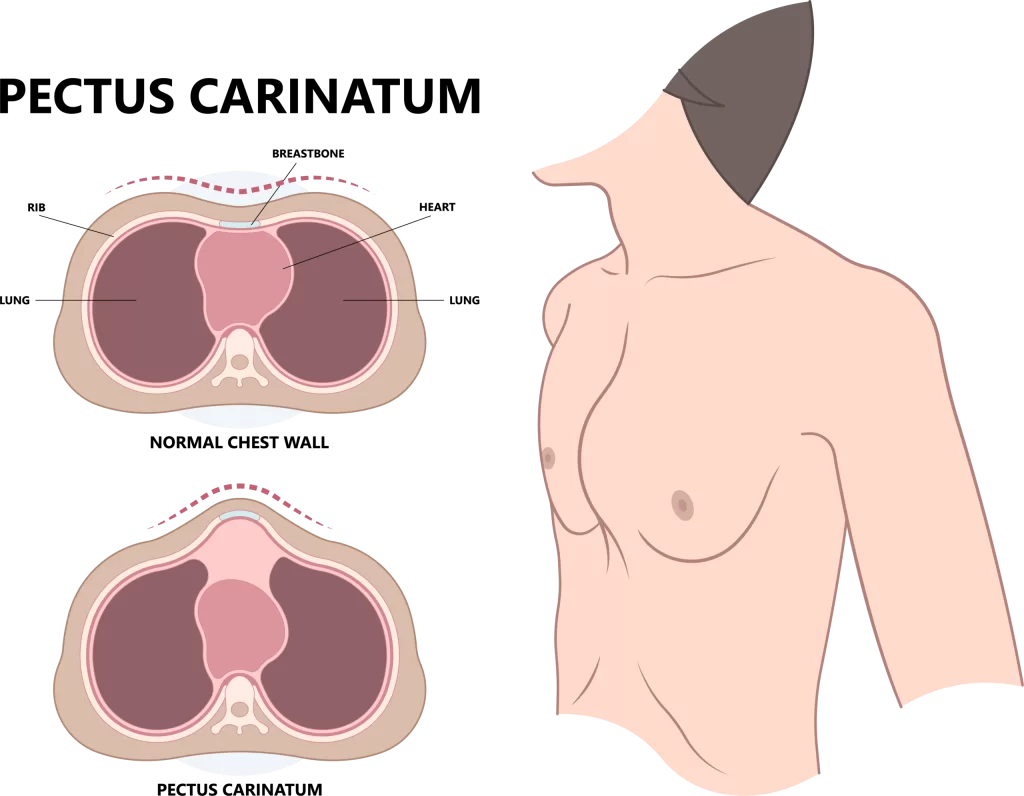
Pigeon breast is not a common disease. However, since it manifests itself in the early stages of adolescence, it is a treatable disease. This disease is treated according to the severity of the disease and the condition of the patient. This treatment is done in two ways surgery and corset.
Surgical treatment, In this treatment, modified ravitch surgery is applied to the patient. For this surgery, an incision is made in the chest area where the person complains. Unhealthy overgrown cartilage is removed and the chest area is pushed back. In some cases, if the doctor deems it necessary, a metal bar is temporarily placed on the chest.
After this surgery, which is accompanied by severe and intense pain, the length of stay in the hospital is planned according to the patient’s condition. This duration of hospitalization also changes the pain present in the patient
Another method of surgical treatment is Abramson Surgery. During this operation, large incisions are not made on the chest, but the operation is performed by entering through the small incisions. This surgery takes 30-45 minutes depending on the patient’s condition and the patient is under the influence of general anesthesia.
Although the duration of stay in the hospital after this operation is 4-5 days, it may vary depending on the patient’s condition. One should avoid sudden movements. After 2-3 weeks, the patient can return to normal life with the approval of the doctor. Again, the sick child can start school after 2-3 weeks with the approval of the doctor.
Corset Treatment; Another preferred method is corset treatment. The corset, which is put on the patient, is aimed to bring the chest to its normal position by pressing the ribs from the back and the belief board from the front.
The patient should wear the corset for 18-20 hours a day for 2 years. As recommended by doctors, it should be removed only while taking a shower and playing sports. Unless the doctor says otherwise, what the doctor says should be done to the letter.
Does Pigeon Breast Grow?
Although pigeon chest disease is congenital, it also manifests itself at younger ages. This disease, which is usually seen in children, tends to grow with the child since the bone development and growth of children are not completed.
It can be operated at 1-2 years old, but it is not recommended. Surgery is usually performed during adolescence or earlier, such as at the age of 7-8 years.
Exercise for Pigeon Breast
If the pigeon’s chest disease is at a non-advanced stage, it has the opportunity to improve with sports. However, if its appearance and symptoms are advanced, it may require surgical intervention under the control of a doctor.
Contrary to what he says after the surgical operation, it is not recommended to do a sport or activity in communication with the doctor.
What Are The Complications of Pectus Carinatum?
Pectus carinatum, also known as pigeon chest, is a condition in which the sternum (breastbone) sticks out more than usual. It is a relatively common condition, affecting about 1 in 1,000 people.
In most cases, pectus carinatum does not cause any complications. However, in some cases, it can lead to the following:
Shortness of Breath: The protrusion of the sternum can put pressure on the lungs and make it difficult to breathe.
Chest Pain: The protrusion of the sternum can also put pressure on the heart and cause chest pain.
Self-esteem Issues: Pectus carinatum can cause self-esteem issues, as it can make the person feel self-conscious about their appearance.
Heart Problems: In rare cases, pectus carinatum can lead to heart problems, such as arrhythmias and heart failure.
Pigeon Breast Corset Treatment
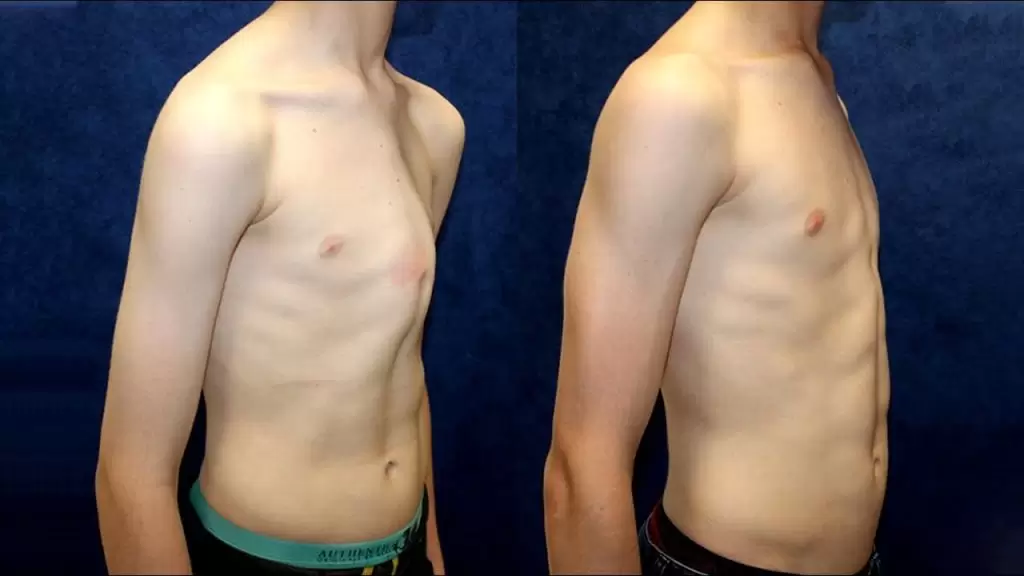
Although surgical operation is necessary for people with pigeon chest disease, in some cases the doctor does not recommend it and starts corset treatment. Especially in children whose bone development is not complete, if this disorder is not advanced, treatment is started with a corset called Orthosis.
The purpose of the use of this corset in children is to treat the disease by taking a more comfortable shape of the flexible bone structure that has not yet completed its development.
Orthotics; It is an apparatus that helps the chest to take a normal shape by pressing the ribs from the back and the belief board section from the front. This apparatus is compressed every 4-6 weeks under the control of the doctor, and the process of shaping the chest is continued.
What Causes Pigeon Chest Pectus Carinatum?
Pigeon chest, also known as pectus carinatum, is a condition that causes the breastbone to protrude outward, giving the chest a pigeon-like appearance. While the exact cause of pectus carinatum is unknown, several factors are believed to contribute to its development.
One of the main causes of pigeon chests is an abnormal growth of the cartilage that connects the ribs to the breastbone. This abnormal growth can lead to the breastbone pushing outward, causing the chest to take on a protruding shape. Genetics also plays a role in the development of pectus carinatum, as it tends to run in families.
Other factors that may contribute to the condition include certain medical conditions like Marfan syndrome, scoliosis, and rickets. Additionally, poor posture during childhood and adolescence, such as slouching or hunching over, can put pressure on the chest and contribute to the development of a pigeon chest.
While pigeon chest is generally not harmful or painful, it can cause self-esteem issues and may affect lung and heart function in severe cases. Treatment options for pectus carinatum include bracing, physical therapy, and in some cases, surgery to correct the chest’s appearance and improve lung function if necessary.
Overall, while the exact cause of pigeon chest remains unknown, a combination of genetic and environmental factors, as well as abnormal cartilage growth, contribute to its development.
Will Pectus Carinatum Go Away?
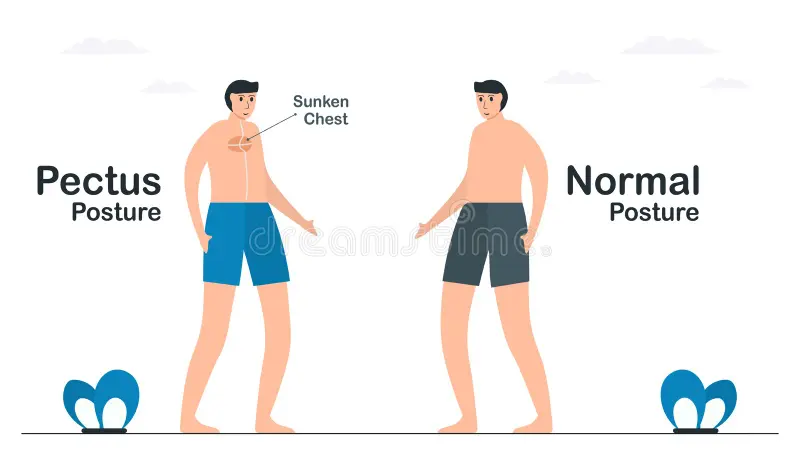
Pectus carinatum, also known as pigeon chest, is a chest deformity where the breastbone protrudes outward, giving the appearance of a bird’s chest. It is a relatively rare condition, affecting around 1 in 1,500 individuals.
Many people wonder if pectus carinatum will go away on its own, especially in children and teenagers who may feel self-conscious about their appearance. Unfortunately, in most cases, it does not resolve spontaneously. Pectus carinatum is caused by an abnormal growth of cartilage in the chest, and without intervention, it is unlikely to improve.
However, there are treatment options available for pectus carinatum. One common approach is using a chest brace, which is worn for several hours a day to gradually correct the deformity. This method can be effective in children and adolescents whose bones are still growing.
In more severe cases or when the brace is not effective, surgery may be recommended. The most common surgical procedure for pectus carinatum is called the Ravitch procedure, which involves removing the abnormal cartilage and reshaping the chest wall.
In conclusion, pectus carinatum is unlikely to go away on its own. However, with the appropriate treatment, such as wearing a chest brace or undergoing surgery, individuals can achieve a more normal chest appearance and improve their self-confidence.
When Pectus Carinatum Will Recover After Surgery?
Recovery times can vary from person to person, depending on various factors. However, here’s a general timeline to give you an idea of what to expect:
Immediate Post-Op: Right after the surgery, you’ll likely spend a few days in the hospital for observation and pain management. You might experience pain, swelling, and discomfort during this time.
First Few Weeks: In the weeks following surgery, you should gradually regain mobility and experience a decrease in pain. Your surgeon will advise you on how to care for the surgical site and manage any discomfort.
First Month: By the end of the first month, you should be able to return to light activities, such as walking and gentle stretching. Follow your surgeon’s guidelines carefully to avoid complications.
3-6 Months: Within three to six months post-surgery, most individuals can resume moderate physical activities. It’s important to follow a rehabilitation plan designed by your surgeon or a physical therapist to ensure a smooth recovery.
6-12 Months: Full recovery typically occurs within six to twelve months after surgery. During this time, you’ll regain full strength and flexibility in your chest area. Your surgical scars will also continue to fade.
Can the Pigeon Chest Correct Itself?
Pigeon chest, also known as pectus carinatum, is a condition characterized by an outward protrusion of the chest bone and ribs. It can cause physical discomfort and self-consciousness in those affected. Many individuals wonder if a pigeon’s chest can correct itself over time without medical intervention.
In some cases, the pigeon chest may improve on its own, especially during adolescence. As the body grows and develops, there is a possibility that the chest wall will reshape itself naturally, leading to a reduction in the prominence of the chest bone. However, this self-correction is not guaranteed, and the severity of the condition may vary from person to person.
For individuals who do not experience natural improvement or have a more severe case of pigeon chest, medical intervention may be necessary. Treatment options range from wearing a custom-made chest brace to surgery, depending on the individual’s age, severity of the condition, and desired outcome.
Ultimately, whether the pigeon chest corrects itself or requires intervention depends on the individual. Consulting with a healthcare professional is crucial to determine the best course of action and ensure the most effective treatment plan.
Does a Pigeon’s Chest Get Worse With Age?
Pigeon chest, also known as pectus carinatum, is a condition characterized by an abnormal protrusion of the breastbone. It is a congenital disorder, meaning it is present at birth, and usually becomes noticeable during childhood or adolescence. But does a pigeon’s chest get worse with age?
While pigeon chest does not typically worsen with age, it is important to note that the severity of the condition can vary from person to person. In some cases, the protrusion may remain stable throughout adulthood, causing no significant health issues. However, for others, the deformity may become more pronounced over time, especially if left untreated.
It is recommended to seek medical attention if the pigeon’s chest is causing physical discomfort or psychological distress. Treatment options include bracing, which can help reshape the chest wall, and in severe cases, surgery may be necessary to correct the deformity.
It is worth mentioning that early intervention is often more effective, as the chest wall is more malleable during childhood. Therefore, it is advisable to consult with a healthcare professional if you or your child has a pigeon chest to explore appropriate treatment options and prevent potential complications in the future.
Pigeon Breast Damages
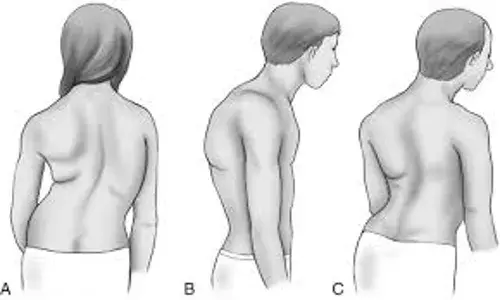
In general, there is no serious harm to health, unless the disturbing symptoms are counted. However, since it is especially seen in adolescent children, psychological problems occur when children of that age are seriously affected. That’s why they want to be treated.
This disease, which is treated under the control of a thoracic surgeon, can be successful with definite results if it is done at an early age before bone development is completed.
Can Pectus Carinatum be Prevented?
Pectus carinatum, a chest wall deformity often characterized by a protruding chest, can raise questions about its prevention. While there’s no guaranteed way to prevent pectus carinatum, understanding its potential causes and risk factors can help you make informed choices. In this article, we’ll explore whether pectus carinatum can be prevented and discuss strategies to reduce the risk of its development.
Understanding Pectus Carinatum:
Pectus carinatum is primarily a congenital condition, meaning it typically develops during fetal growth. It’s important to note that there is no surefire way to prevent a congenital condition, as it is largely influenced by genetics and factors beyond our control.
Genetic Factors:
Research suggests that genetics plays a significant role in the development of pectus carinatum. If you have a family history of chest wall deformities, there may be a higher likelihood of passing on the condition to your offspring. Unfortunately, there’s no way to alter your genetic predisposition to pectus carinatum.
Life after Pectus Carinatum
Psychological and Emotional Adjustment:
Life after pectus carinatum surgery isn’t just about physical healing; it’s also about psychological and emotional adjustment. Many individuals experience improved self-esteem and body image after the procedure. However, it’s important to recognize that the emotional journey can be unique for each person.
- Counseling and Support: Some individuals may benefit from counseling or support groups to address any lingering emotional concerns or body image issues.
Physical Activity and Lifestyle:
Pectus carinatum surgery can significantly impact your physical capabilities and overall lifestyle:
- Improved Physical Function: Many individuals find that they can breathe more easily and engage in physical activities without the constraints imposed by their chest deformity.
- Exercise and Fitness: Regular exercise, particularly chest-strengthening exercises, can help maintain your post-surgery results and overall health.
Follow-Up Care:
Continued follow-up care is crucial to monitor your progress and address any concerns:
Regular Check-Ups: Your surgeon will schedule follow-up appointments to assess your healing and address any issues that may arise.
Scar Management: If you have surgical scars, your healthcare team can provide guidance on scar management techniques.
Pigeon Breast Treatment in Turkey
Pectus Carinatum, that is, pigeon chest disease, means the forward abnormal growth of the cartilage structure in the chest area, and the treatment of this disease is carried out in Turkey.
Turkey has been a light of hope for patients by making serious technological leaps in the field of medicine and bringing solutions to many diseases. Turkey is among the countries that are frequently preferred by foreign patients, as diseases that affect human life seriously have a high success rate in Turkey.
Many factors such as the quality of hospitals and doctors, affordable prices, holiday opportunities in Turkey, and the smiling faces of the caregivers reinforce the reasons for preference.
The price of pigeon chest disease, which is treated in Turkey, varies according to the condition of the disease and the type of treatment to be performed. You can contact us for more clear and detailed price information on this subject.

Vimfay International Health Services